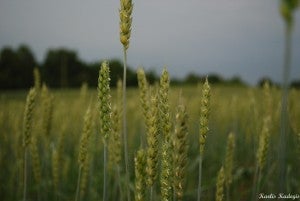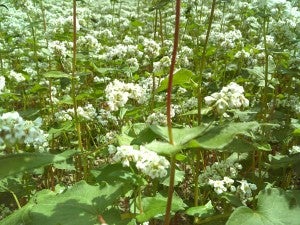How cover crops can help growers beat droughts and floods

Corn is trying to fight this summer’s extreme weather, and unfortunately, the weather is winning.
There are serious floods in the Midwest, devastating droughts in California, and brutal heat waves along the eastern seaboard. Ohio for example had a record June rainfall of 11 inches, which stunted corn roots and prevented many growers from planting any corn crops. In Northwest Ohio alone, 100,000 acres were left unplanted. At the same time, places in my home state of North Carolina experienced a June heat wave during the critical corn pollination period, significantly damaging corn yields.
These extreme weather events leave many farmers searching for ways to make the best of a challenging growing season. Although June’s weather was the opposite in Ohio and North Carolina, cover crops offer a proven solution to deal with both conditions.
A new national cover crop survey from the Sustainable Agriculture Research and Education program and the Conservation Technology Information Center documents the value of cover crops in extreme weather years. And for the third year in a row, growers using cover crops in corn and soybean fields benefited from higher yields.
With a changing climate, droughts and floods are likely to become more frequent. Cover crops are one solution that can help protect soil health, crop yields and profits – that’s a win-win-win for farmers.
Beating weather extremes
In addition to documenting the benefits of cover crops, the survey asked farmers if they believe cover crops helped them thrive in the face of extreme weather. More than half of respondents said that using cover crops reduced the yield variability associated with weather extremes.
And as stated by survey analysts: “Data indicate that yield impact from cover crops may be more dramatic when cash crop growing conditions are more challenging – for instance, drought conditions in 2012 may have made the moisture-enhancing benefits of cover crops more vital.”

In Ohio’s waterlogged soils, growers who were unable to get into the field to plant or who suffered crop failure can benefit from cover crops, which will help with recovery of oversaturated soils. Cover crops can keep nutrients in their place, and reduce further soil degradation and erosion. In North Carolina, corn that failed to produce ears will likely leave nitrogen in the soil that could be scavenged and held in place by a cover crop.
With these benefits, next season’s soils will be nutrient-rich and ripe for planting and productivity next season.
Protecting yields
The survey also revealed that during 2012-2013’s devastating drought in the Midwest, farmers using cover crops saw an average corn yield increase 9 percent and a soy yield increase 10 percent.
Even in “normal” growing years, cover crops can boost yields. The 2014-2015 survey results showed an average yield benefit over 2 percent for corn planted after cover crops and a benefit of over 4 percent for soybeans planted after cover crops.
Fortunately, there are many resources available to help farmers get started with cover crops, such as the Soil Health Partnership, United Suppliers’ SUSTAIN platform, Murphy-Brown’s MB Gro program, and the Conservation Technology Information Center. EDF is also working in Ohio and North Carolina to help growers and food companies implement sustainable grain practices.












